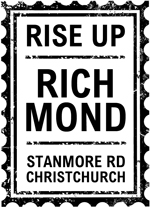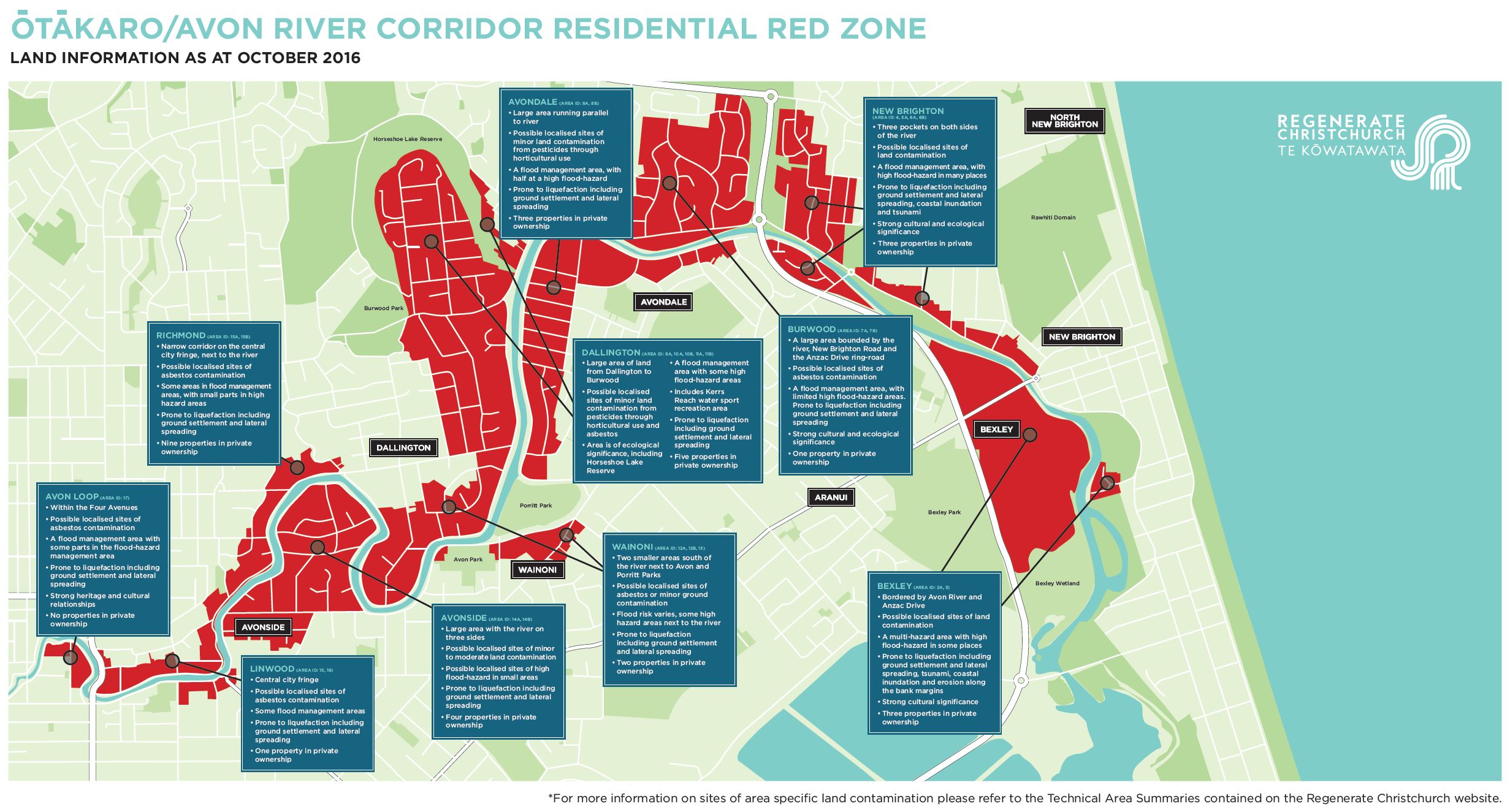Regenerate Christchurch – Land Use Assessment Report – Visitor Attractions
Overview
– to create land uses within the Area that encourage and facilitate visitor attractions for the benefit of Christchurch residents and Christchurch’s tourism industry by attracting visitors from outside Christchurch.
Existing Attractions in Christchurch
– Christchurch Adventure Park
– Christchurch Botanic Gardens
– Christchurch Gondola
– International Antarctic Centre
– Ko Tāne Village at Willowbank
– Orana Wildlife Park
– Transitional Cathedral
Strategic Context
The Greater Christchurch Regeneration Act 2016 establishes Regenerate Christchurch’s purpose to “support a vibrant, thriving Christchurch that has economic, social, and lifestyle opportunities for residents, businesses, visitors, investors and developers”.
Our Shared Ōtākaro Avon River Vision
The river is part of us and we are part of the river.
It is a living part of our city.
A place of history and culture
where people gather, play, and celebrate together.
A place of learning and discovery
where traditional knowledge, science and technology meet.
A place for ideas and innovation
where we create new ways of living and connecting.
OUR VISION IS FOR THE RIVER TO CONNECT US TOGETHER –
with each other, with nature and with new possibilities.
For Christchurch
– Support safe, strong and healthy communities that are well-connected with each other and with the wider city.
– Provide opportunities for enhanced community participation, recreation and leisure.
– Create a restored native habitat with good quality water so there is an abundant source of mahinga kai, birdlife and native species.
– Create opportunities for sustainable economic activity and connections that enhance our wellbeing and prosperity now and into the future.
For New Zealand
– Develop the Ōtākaro Avon River Corridor Regeneration Area as a destination that attracts a wide range of domestic and international visitors.
– Establish a world-leading living laboratory, where we learn, experiment and research; testing and creating new ideas and ways of living.
– Demonstrate how to adapt to the challenges and opportunities presented by natural hazards, climate change and a river’s floodplain.
Investment Drivers
1. Christchurch lacks attractions that operate through the shoulder and winter seasons. Also, there are few attractions with flexible and/or late night opening hours.
2. Christchurch falls behind other NZ cities in benefitting from tourism due to reduced visitation and length of stay.
3. A lack of activities in east Christchurch for visiting family and friends of residents has resulted in less visitation from other parts of Christchurch and Canterbury.
Benefits
– Attractions bring people back into east Christchurch and help create linkages between surrounding neighbourhoods and communities.
– Christchurch is known as a desirable city for local, national and international visitors.
– There are local economic growth and employment opportunities.
– The attraction contributes to the regeneration of the Area.
Risks
– The proposed attractions do not generate increased visitation to Christchurch and/or the regeneration of Christchurch.
– The proposed attractions do not align with the Christchurch visitor strategy or the design plan for the Area.
– The attraction becomes an island in east Christchurch and is not integrated into the community or creates gentrification or displacement in east Christchurch.
– No developers or operators can be found for the proposed attractions.
Potential Options
The options are intended to provide context to the development of a long list of land use options only, and should not be interpreted as attractions to be included in the Area.
– Themed Space: represents Christchurch’s history or culture, eg. a maze which incorporates aspects of Christchurch’s cultural heritage, earthquake events and natural environment through sculptures, murals etc.
– Playground: The Margaret Mahy Family Playground has been a huge success and there may be an opportunity to create another playground with a similar theme for east Christchurch residents. This could begin a theme for Christchurch as a playground capital.
– Observatory/Dark Skypark: Use the absence of light pollution in the Area to build an observatory and supporting infrastructure. The observatory at the Arts Centre was popular among locals and also offered a place for educational research.
The Townsend Observatory in the Arts Centre was badly damaged during the 2011 earthquakes. The historic Townsend telescope could be recommissioned in the Area subject to discussions with the Christchurch Arts Centre.
The Area could feature an observatory that catered for visitors and complemented the Mt John Observatory in Tekapo.
Likewise, a Dark Sky approach to the area could build on New Zealand’s reputation for low light pollution.
– Eco-attractions: Create an eco-attraction, to build on Christchurch’s international reputation as a garden city. Christchurch holds a number of botanical and garden events each year.
– Cultural Experience: Create a cultural experience that reflects the history of Christchurch and/or New Zealand. Christchurch currently lacks the type of major cultural experience which is present in other major centres.
The Area offers an opportunity to tell Christchurch’s story and incorporate the Ōtākaro Avon River, which is an important part of Christchurch’s history.
The Tamaki Village, Rotorua, is an interactive Māori cultural experience in Rotorua that gives visitors aview into Māori history,art forms, rituals and traditions.
– Golf Course: New Zealand is known as a golf mecca and Clearwater has been a major success in Christchurch from both an attraction and real estate perspective.
An additional premium course would be preferable as Christchurch does not have a shortage of green fee or standard club courses.
– Theme Park: Create a theme park-based attraction. Rainbow’s End is currently the only major theme park in New Zealand and there is an opportunity to investigate whether there is demand for another theme park attraction.
– Action Sports Facility/Grounds: Construct a sports facility that would attract spectators and/or competitorsin addition to participants. Christchurch is well known as a destination for a range of sports and attracts visitors and competitors both nationally and internationally.
There is an opportunity to further investigate the feasibility of alternative use sporting facilities/grounds in the Area.
– Flatwater Facility: A flatwater facility could provide a base for a number of water sports that attract national and international spectators and add to Christchurch’s current sport facility portfolio.
– Festival Water Sports Course: A festival-style short water sports course for events and competitions between Fitzgerald Avenue and Stanmore Road and linking further downstream that attracts small and unique events for a wide range of water sports.
– Whitewater Sports Hub: Construct a whitewater sports hub that could be used as an attraction as well as for sporting events and education, eg a surf park, white water park, wakeboard park etc. An action water sports facility could provide a base for a number of water sports that attract national and international spectators and add to Christchurch’s current sport facility portfolio.
– Gondola: Construct a gondola that provides a transportation option between the central city and New Brighton. It would have a number of stops along the routes to allow access to different parts of the Corridor and to provide a car-free transport option.
– Art/Sculpture Park: Develop an art/sculpture park that uses the landscape of the Area to display different pieces of outdoor art. Complementary to many other ideas for the Area.
– Eco-sanctuary: Develop an eco-sanctuary for Christchurch to build on the success of existing eco-sanctuaries in Dunedin, Wellington and across New Zealand.
It could be developed to encourage both ecological restoration and education while incorporating other visitor attraction ideas to enhance the offering.
The eco-sanctuary could also be focused around certain themes, eg a butterfly habitat.
“It is recommended that the ability to allow for a wide range of attraction ideas that have the potential to succeed in the Area is included in the long list of land use options.
It is clear that the success of attractions in the Area would be closely linked to the successful regeneration of the Area overall and the creation of a unique and attractive place with appropriate supporting infrastructure that provides investors with the confidence to investigate opportunities in detail.
In particular, the following key points should be considered in any decision around including attractions in the Area:
– Any opportunities presented for attractions need to ensure alignment with the investment objectives and critical success factors established in this report.
– There needs to be a balance of attractions that cater for local residents and international visitors.
– Given the need for greater focus on Christchurch’s tourism sector, priority should be given to assessing and progressing any visitor attraction opportunities that are presented if visitor attraction areas are included in the Plan.
– If visitor attraction areas are included in the long list of land use options, there needs to be a focus on creating “clusters” that are supported by an effective and efficient multi-modal transport network connecting the central city and New Brighton.”

